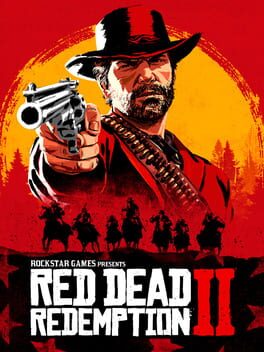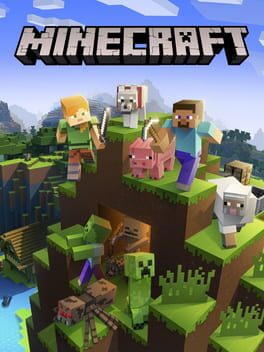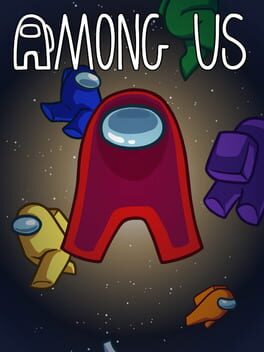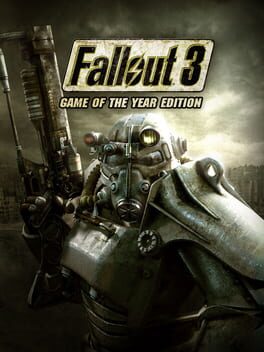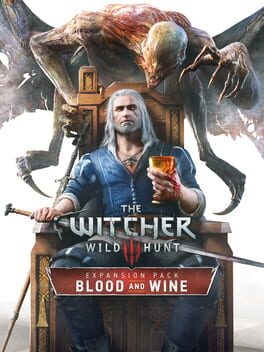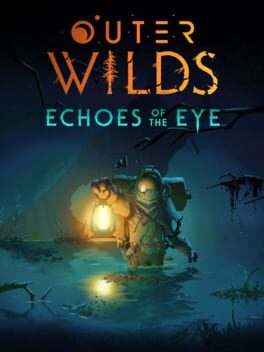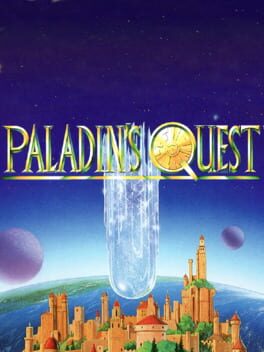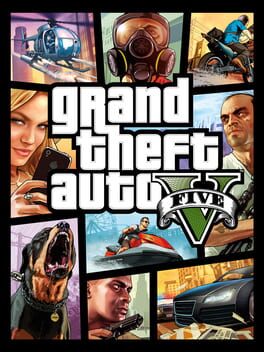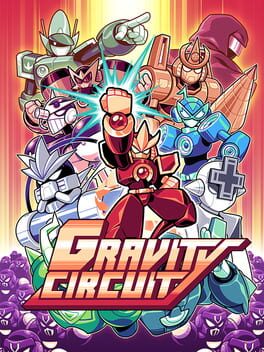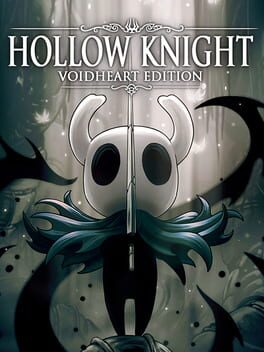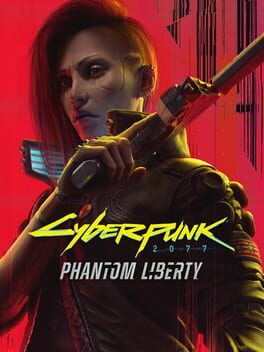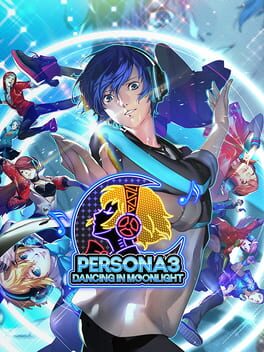Toda una sorpresa. La ambientación me recuerda a Hollow Knight en el sentido que te transporta a un mundo hostil pero también con cierto encanto y al que le coges cariño. El mapa es bastante amplio y cada habitación está llena de secretos, algunos quizás demasiado escondidos e imposibles de encontrar sin guía.
Lo peor para mí es que tiene demasiados objetos y en el tramo final estás más tiempo cambiando uno a uno con los gatillos que jugando.
Lo peor para mí es que tiene demasiados objetos y en el tramo final estás más tiempo cambiando uno a uno con los gatillos que jugando.
I seem to be one of the few people who played this on iOS instead of switch. Got it years back as iPhones have a severe lack of any platformers, so seeing one with nice looking pixel art caught my attention. And all things considered it's pretty good. Simple but charming platformer with one button sword combat. Pixel art is nice, music and effects are good, and level design is fine (for the most part). I respect how it has secret collectables in every level. Many of which are new items or weapons that are entertaining to try out.
Only annoying thing really is that the games fake wall secret style can boil down to having to hug every wall and ceiling in the level to make sure you don't miss anything on your first go through, makes going for 100% in a timely manner more of a chore than anything. Besides for that its a fine little game.
Only annoying thing really is that the games fake wall secret style can boil down to having to hug every wall and ceiling in the level to make sure you don't miss anything on your first go through, makes going for 100% in a timely manner more of a chore than anything. Besides for that its a fine little game.
Probably my favorite game of all time. I think some of the other souls games are better, and I definitely recognize its flaws, but there is so much I have to give ER credit for. It introduced me to the series/genre that changed my entire outlook on what I want to do with my life, and for that I have to thank it. I'm forever chasing the high of that first playthrough, and I'm incredibly hyped for Shadow of the Erdtree to hopefully fulfill that.
A friend told me about this game around the time I was finishing up Necromancer. I like to consider myself fairly familiar with the Super Nintendo’s library, and so I was quite surprised that there was an RPG of all things on the system that I just had no memory of hearing about before. She told me it was a favorite of a friend of hers when they were little, and they called it a forgotten classic. While always skeptical of such claims, I tried to go in with an open mind as I always do. Opinions seemed quite split for this game online, and I tend to fall on the more favorable side of such things when I end up playing games with this kind of split reputation. Regardless, now that I’m done with it, I’ll just say that I certainly wish I could see this game as a forgotten classic! XD. The game doesn’t record your playtime, and I slowly made my way through it over a couple weeks, so I reckon that it took me around 25~30 hours to beat the Japanese version of the game using emulated hardware (and liberal savestate and speed up use in particular areas I’ll get to later).
Paladin’s Quest is, ironically, not the story of a paladin at all (though given that this is an Enix-localized game in English, it’s unsurprising that the translation is kinda crap XP). The Japanese title is Lennus: Kodai Kikai No Kiroku (Lennus: Memory of the Ancient Machine), and it’s far more accurate in its description of the game’s contents. The game takes place on the world of Lennus, and you play as Chezuni, a young boy attending a magic school. One day, his younger friend Ducas dares him to enter the forbidden tower on campus. Not one to back down from a challenge, Chezuni goes with Ducas into the tower where he ends up almost immediately accidentally activating an ancient, evil machine that beats him up. Upon regaining consciousness, Chezuni is informed by the school’s principal that the entire academy has been destroyed and all the staff and students KILLED by the ancient machine he woke up, and he’s now the only one who can stop it!
This game is from late 1992, so it probably won’t amaze you when I say that the story isn’t particularly incredible. That said, it’s frankly got some pretty steep competition in that regard, as Super Famicom RPGs really started picking up that year. Final Fantasy V, Dragon Quest V, Shin Megami Tensei 1, and even Hero Senki (that Gundam X Kamen Rider X Ultraman licensed RPG I played a year or two ago) all came out that same year. Paladin’s Quest ends up falling behind all of them, to be perfectly frank. While the story does have some cool reveals and twists, it doesn’t have much at all in the way of character. It sorta tries to have an overarching theme, but the narrative as a whole really struggles to make much of an impression in large part due to just how slowly paced it feels.
It’s mostly just another RPG where you go from town to town solving problems and collecting Big Plot items here and there, and then things ratchet up near the end until the story finally comes to a close. It’s so by the book that it honestly feels far more like an 8-bit RPG that was pushed forward onto 16-bit hardware without much consideration to how the narrative would need to be changed to accommodate greater hardware and storage capacities. This isn’t a badly written game by the standards of the time, sure, but it wouldn’t have been anything impressive then, and it certainly isn’t going to be anything impressive now either.
Mechanically, Paladin’s Quest has a lot of interesting and clever design choices that almost make it a compelling choice for a beginner’s RPG (in the same way something like Earthbound or Super Mario RPG did on the same system). While you have relatively standard turn-based combat, the actual way you navigate combat is very fast and snippy due to how you actually barely need button pressed to navigate battle menus. Just pressing the four cardinal directions on the D-pad will select any option you could want in battle, and you only really need the B button if you want a dedicated cancel key. It takes a little getting used to, but given that you can also even rebind the buttons from the options menu, this is a game that gives the player an unusually large ability to customize their experience, particularly for the time it was released.
Additionally, the game’s battle system is quite simplified (even for the time), as it lacks any kind of MP system. Instead, casting spells simply consumes HP. While this does mean that you never have any HP healing spells, it also means that your healing is instead all tied to items in the form of HP bottles of varying strengths. The game has quite a lot of spells, but very few total items. You actually can’t even use items in battle outside of the bottle you’ve equipped to that particular character’s belt slot.
Farther simplifying things still (in a sense), you only have two out of your four party members to worry about equipment for. Chezuni and his friend Midia are your two permanent party members, while your other two slots will be filled in by either temporary plot-mandatory party members or the much more common mercenaries that you get to tag along with you. Some of these mercenaries have odd or unfortunate downsides (two or three are basically traps), most of them are simple, straightforward upgrades to previous ones. However, if you like a particular mercenary, you don’t necessarily even need to get rid of them! While you can’t change equipment or buy new spells for a merc, they level up with EXP just like your main two party members do. Equipment doesn’t actually boost your stats that much in the first place, truthfully, so just getting another level or two instead of worrying about new armor or weapons will often keep an old favorite merc just as strong if not stronger than a new merc might’ve been (at least until the very late game).
Bundle all of that together with how relatively short and straightforward dungeons are and how relatively well signposted the story is, and you have a simple, approachable RPG to help any newbie get into the genre... at least in theory ^^; While I started out with lukewarm but still positive feelings towards Paladin’s Quest’s design, the devil is in the details, and they really came out more and more as I got further and further into the game. There are a few fairly major design choices that really bring down the gameplay experience of Paladin’s Quest to the point that it very well might end up scaring off as many RPG newbies as it invites in.
On the more minor end of things, we have the menu and UI design. While not bad in and of itself, it’s very cumbersome both in and out of battle. Everything being D-pad based makes things easy for doing stuff with one hand, which I certainly appreciate, but it also means you’re doing a lot more button presses with far less efficiency than you would be if you were using both the D-pad and face buttons like a more normal game does. Out of battle, healing is done by going into your inventory and using the healing bottles you’ve got, but after every use, it closes your inventory completely. Given that you’re usually using like 4 or 5 or more charges of these things per healing session, that makes for a very big pain in the butt to lick your wounds after any major fight.
Difficulty in and of itself is a weird thing as well. The game has very little in the way of bosses (much like was the case with old Dragon Quest RPGs and such things). Until the final boss (who is a truly miserable slog and where I did all that aforementioned save state abuse), there’s barely a truly challenging fight through the whole game as far as mandatory fights go. Encounter design, however, is really messed up to heck and back. The end of the game is absolutely lousy with miserably tanky and hard-hitting enemy packs who will often take five or more minutes per encounter to put down (and the encounter rate is not nearly low enough to make that reasonable), but that is in no way an anomaly. In just about every other area, you’ll always be running into really mean packs of enemies who are way stronger and more annoying than anything else in the area who take forever to put down. The battle system just isn’t dynamic or deep enough to make these long, drawn out combats fun or interesting, and it makes random battles a real chore very fast (and they basically never improve).
The biggest problem, however, is one that weighs down on all others, and that’s the way the magic system works. In a rather unusual move for the time, Paladin’s Quest actually has no dedicated “intelligence”-type of stat that in most games would scale your magic power higher as you level up. You also don’t actually learn new spells from leveling up either. Instead, magic as a system is effectively completely segregated off from the power curve of leveling up and split into eight different stat bars (one for each magic element). As you progress through the game, you’ll slowly accumulate more elements you can draw from, and gaining a new element will saddle you with a big new pile of spells for both of your main characters as elements automatically mix to make new spells (getting the water element when you already have earth will give you the water + earth spell, for example).
It’s already very annoying that you can’t actually check what your huge list of spells does in battle. You can only check them in the stats screen out side of battle. However, far more annoying than that is how these spells actually power up. One use of a spell will increase the power of that spell’s element by one point. The higher your power in a particular spell, the more your offensive AND defensive power for that particular element increases (so if you want to have a higher natural defense from lightning magic, you better get spamming lightning spells). However, while your normal levels actually increase fairly quickly, your magic affinities increase extremely slowly, and it just comes off feeling like a fool’s errand to try and power any of them up. Add in that magic as a whole tends to do pretty pitiful amounts of damage even with your points in an element completely maxed out, and you have a system that’s a real pain in the butt to try and interact with much (especially when what you’re trying to defend against is some element you don’t have yet or, in some cases, can never possibly actually acquire).
How that magic stuff interacts with that wonky difficulty is also a fairly major sticking point with me for this game. Because the game lacks much in the way of bosses, it’s hard to actually know just how over or under powered you really are. While a more typical RPG from the time would have you grinding until you can safely progress through an area without healing all that much, that’s not really the case in Paladin’s Quest. Your healing reserves run SO deep because your spells consume HP, virtually every dungeon in the game is more of a question of “how deep are your healing resources and are you brave enough to just keep going, trusting that they’ll not run out?” more than how resistant to enemy attacks you really are. This can mean that when you actually do get to some huge fact mulching boss (particularly the final boss), it can come off as a real shock even if you’ve been not running away from encounters and have the best gear you possibly can (as I was).
All in all, the gameplay is just really uninteresting and tedious. If the game weren’t very hard, then the simplicity wouldn’t really be an issue worth mentioning, but because the game actually does get not just hard, but very time consuming, we end up with a big negative feedback loop of boring: slow trudging battles to slow monotonous healing to dull interesting story, rinse and repeat for 20+ hours.
The aesthetics are quite pretty and striking, at least in the visuals. I don’t think saying that the graphics look primitive really gets across well enough how they look. It’s almost like they went for a minimalist style that was still 16-bit in nature (what a friend and I dubbed as looking like from a “12-bit” console, halfway between 8-bit and 16-bit). Monster design and world design overall are very cool and unique, and at the very least for visuals, the game doesn’t fail to live up to expectations for a game from late ’92. The music is all around okay, but nothing special. It uses some interesting instruments for its tracks that certainly made them stand out a bit more at first exposure, but there just really aren’t that many songs in the first place. What’s there isn’t bad, but I’d struggle to call any of it particularly good or memorable (especially comparing it to other RPG OSTs that were gracing the SFC that same year).
Verdict: Not Recommended. I was fully planning to ultimately hesitantly recommend this game until the last 1/3rd of it or so, at which point it just really started to sink in just how poorly put together the whole thing was. While it’s not a crime to not excel at anything in particular and just provide an approachable, competent experience for beginners, it really starts being a problem once it starts getting frustrating and boring, and that’s a sin that Paladin’s Quest is absolutely guilty of. It even had me fondly remembering the mind-numbing grinding of Necromancer, which was what really pushed it over the edge for me that this was something I just really couldn’t recommend at all XD. Simply put: Your time is worth more than what you’ll spend playing through Paladin’s Quest. Paladin’s Quest would’ve been underwhelming and filled with outdated, mean design even back when it came out, and time has been nothing but more and more unkind to it since. Do yourself a favor and look elsewhere for your SFC RPG fun times, as there is no hidden classic waiting for you in Paladin’s Quest, just something that’s unremembered for very valid and fair reasons.
Paladin’s Quest is, ironically, not the story of a paladin at all (though given that this is an Enix-localized game in English, it’s unsurprising that the translation is kinda crap XP). The Japanese title is Lennus: Kodai Kikai No Kiroku (Lennus: Memory of the Ancient Machine), and it’s far more accurate in its description of the game’s contents. The game takes place on the world of Lennus, and you play as Chezuni, a young boy attending a magic school. One day, his younger friend Ducas dares him to enter the forbidden tower on campus. Not one to back down from a challenge, Chezuni goes with Ducas into the tower where he ends up almost immediately accidentally activating an ancient, evil machine that beats him up. Upon regaining consciousness, Chezuni is informed by the school’s principal that the entire academy has been destroyed and all the staff and students KILLED by the ancient machine he woke up, and he’s now the only one who can stop it!
This game is from late 1992, so it probably won’t amaze you when I say that the story isn’t particularly incredible. That said, it’s frankly got some pretty steep competition in that regard, as Super Famicom RPGs really started picking up that year. Final Fantasy V, Dragon Quest V, Shin Megami Tensei 1, and even Hero Senki (that Gundam X Kamen Rider X Ultraman licensed RPG I played a year or two ago) all came out that same year. Paladin’s Quest ends up falling behind all of them, to be perfectly frank. While the story does have some cool reveals and twists, it doesn’t have much at all in the way of character. It sorta tries to have an overarching theme, but the narrative as a whole really struggles to make much of an impression in large part due to just how slowly paced it feels.
It’s mostly just another RPG where you go from town to town solving problems and collecting Big Plot items here and there, and then things ratchet up near the end until the story finally comes to a close. It’s so by the book that it honestly feels far more like an 8-bit RPG that was pushed forward onto 16-bit hardware without much consideration to how the narrative would need to be changed to accommodate greater hardware and storage capacities. This isn’t a badly written game by the standards of the time, sure, but it wouldn’t have been anything impressive then, and it certainly isn’t going to be anything impressive now either.
Mechanically, Paladin’s Quest has a lot of interesting and clever design choices that almost make it a compelling choice for a beginner’s RPG (in the same way something like Earthbound or Super Mario RPG did on the same system). While you have relatively standard turn-based combat, the actual way you navigate combat is very fast and snippy due to how you actually barely need button pressed to navigate battle menus. Just pressing the four cardinal directions on the D-pad will select any option you could want in battle, and you only really need the B button if you want a dedicated cancel key. It takes a little getting used to, but given that you can also even rebind the buttons from the options menu, this is a game that gives the player an unusually large ability to customize their experience, particularly for the time it was released.
Additionally, the game’s battle system is quite simplified (even for the time), as it lacks any kind of MP system. Instead, casting spells simply consumes HP. While this does mean that you never have any HP healing spells, it also means that your healing is instead all tied to items in the form of HP bottles of varying strengths. The game has quite a lot of spells, but very few total items. You actually can’t even use items in battle outside of the bottle you’ve equipped to that particular character’s belt slot.
Farther simplifying things still (in a sense), you only have two out of your four party members to worry about equipment for. Chezuni and his friend Midia are your two permanent party members, while your other two slots will be filled in by either temporary plot-mandatory party members or the much more common mercenaries that you get to tag along with you. Some of these mercenaries have odd or unfortunate downsides (two or three are basically traps), most of them are simple, straightforward upgrades to previous ones. However, if you like a particular mercenary, you don’t necessarily even need to get rid of them! While you can’t change equipment or buy new spells for a merc, they level up with EXP just like your main two party members do. Equipment doesn’t actually boost your stats that much in the first place, truthfully, so just getting another level or two instead of worrying about new armor or weapons will often keep an old favorite merc just as strong if not stronger than a new merc might’ve been (at least until the very late game).
Bundle all of that together with how relatively short and straightforward dungeons are and how relatively well signposted the story is, and you have a simple, approachable RPG to help any newbie get into the genre... at least in theory ^^; While I started out with lukewarm but still positive feelings towards Paladin’s Quest’s design, the devil is in the details, and they really came out more and more as I got further and further into the game. There are a few fairly major design choices that really bring down the gameplay experience of Paladin’s Quest to the point that it very well might end up scaring off as many RPG newbies as it invites in.
On the more minor end of things, we have the menu and UI design. While not bad in and of itself, it’s very cumbersome both in and out of battle. Everything being D-pad based makes things easy for doing stuff with one hand, which I certainly appreciate, but it also means you’re doing a lot more button presses with far less efficiency than you would be if you were using both the D-pad and face buttons like a more normal game does. Out of battle, healing is done by going into your inventory and using the healing bottles you’ve got, but after every use, it closes your inventory completely. Given that you’re usually using like 4 or 5 or more charges of these things per healing session, that makes for a very big pain in the butt to lick your wounds after any major fight.
Difficulty in and of itself is a weird thing as well. The game has very little in the way of bosses (much like was the case with old Dragon Quest RPGs and such things). Until the final boss (who is a truly miserable slog and where I did all that aforementioned save state abuse), there’s barely a truly challenging fight through the whole game as far as mandatory fights go. Encounter design, however, is really messed up to heck and back. The end of the game is absolutely lousy with miserably tanky and hard-hitting enemy packs who will often take five or more minutes per encounter to put down (and the encounter rate is not nearly low enough to make that reasonable), but that is in no way an anomaly. In just about every other area, you’ll always be running into really mean packs of enemies who are way stronger and more annoying than anything else in the area who take forever to put down. The battle system just isn’t dynamic or deep enough to make these long, drawn out combats fun or interesting, and it makes random battles a real chore very fast (and they basically never improve).
The biggest problem, however, is one that weighs down on all others, and that’s the way the magic system works. In a rather unusual move for the time, Paladin’s Quest actually has no dedicated “intelligence”-type of stat that in most games would scale your magic power higher as you level up. You also don’t actually learn new spells from leveling up either. Instead, magic as a system is effectively completely segregated off from the power curve of leveling up and split into eight different stat bars (one for each magic element). As you progress through the game, you’ll slowly accumulate more elements you can draw from, and gaining a new element will saddle you with a big new pile of spells for both of your main characters as elements automatically mix to make new spells (getting the water element when you already have earth will give you the water + earth spell, for example).
It’s already very annoying that you can’t actually check what your huge list of spells does in battle. You can only check them in the stats screen out side of battle. However, far more annoying than that is how these spells actually power up. One use of a spell will increase the power of that spell’s element by one point. The higher your power in a particular spell, the more your offensive AND defensive power for that particular element increases (so if you want to have a higher natural defense from lightning magic, you better get spamming lightning spells). However, while your normal levels actually increase fairly quickly, your magic affinities increase extremely slowly, and it just comes off feeling like a fool’s errand to try and power any of them up. Add in that magic as a whole tends to do pretty pitiful amounts of damage even with your points in an element completely maxed out, and you have a system that’s a real pain in the butt to try and interact with much (especially when what you’re trying to defend against is some element you don’t have yet or, in some cases, can never possibly actually acquire).
How that magic stuff interacts with that wonky difficulty is also a fairly major sticking point with me for this game. Because the game lacks much in the way of bosses, it’s hard to actually know just how over or under powered you really are. While a more typical RPG from the time would have you grinding until you can safely progress through an area without healing all that much, that’s not really the case in Paladin’s Quest. Your healing reserves run SO deep because your spells consume HP, virtually every dungeon in the game is more of a question of “how deep are your healing resources and are you brave enough to just keep going, trusting that they’ll not run out?” more than how resistant to enemy attacks you really are. This can mean that when you actually do get to some huge fact mulching boss (particularly the final boss), it can come off as a real shock even if you’ve been not running away from encounters and have the best gear you possibly can (as I was).
All in all, the gameplay is just really uninteresting and tedious. If the game weren’t very hard, then the simplicity wouldn’t really be an issue worth mentioning, but because the game actually does get not just hard, but very time consuming, we end up with a big negative feedback loop of boring: slow trudging battles to slow monotonous healing to dull interesting story, rinse and repeat for 20+ hours.
The aesthetics are quite pretty and striking, at least in the visuals. I don’t think saying that the graphics look primitive really gets across well enough how they look. It’s almost like they went for a minimalist style that was still 16-bit in nature (what a friend and I dubbed as looking like from a “12-bit” console, halfway between 8-bit and 16-bit). Monster design and world design overall are very cool and unique, and at the very least for visuals, the game doesn’t fail to live up to expectations for a game from late ’92. The music is all around okay, but nothing special. It uses some interesting instruments for its tracks that certainly made them stand out a bit more at first exposure, but there just really aren’t that many songs in the first place. What’s there isn’t bad, but I’d struggle to call any of it particularly good or memorable (especially comparing it to other RPG OSTs that were gracing the SFC that same year).
Verdict: Not Recommended. I was fully planning to ultimately hesitantly recommend this game until the last 1/3rd of it or so, at which point it just really started to sink in just how poorly put together the whole thing was. While it’s not a crime to not excel at anything in particular and just provide an approachable, competent experience for beginners, it really starts being a problem once it starts getting frustrating and boring, and that’s a sin that Paladin’s Quest is absolutely guilty of. It even had me fondly remembering the mind-numbing grinding of Necromancer, which was what really pushed it over the edge for me that this was something I just really couldn’t recommend at all XD. Simply put: Your time is worth more than what you’ll spend playing through Paladin’s Quest. Paladin’s Quest would’ve been underwhelming and filled with outdated, mean design even back when it came out, and time has been nothing but more and more unkind to it since. Do yourself a favor and look elsewhere for your SFC RPG fun times, as there is no hidden classic waiting for you in Paladin’s Quest, just something that’s unremembered for very valid and fair reasons.
Now, this is a proper series climax! And I climax too! Publix Instagram pool which one of us had the best climax? Nah it's me so let's get into this game. It goes from a pale copy to a parody of the series within the first 30 minutes. Now, there are officially more teddy bears than I have fingers. We don't need motives Monokuma, I have a decent one for every spawn of yours. Speaking off, deaths have become grittier, haven't they? I know it's like that gif of Spongebob and Patrick riding a rollercoaster, but still. Kodaka can't stray too far from the recipe if he wants the meal to be recognizable.
Thank the heavens Shuichi is likeable, else we would have a really big problem here! Luckily, he fulfills his role well in spite of the naysayers. He has more personality than he let on at the start, kinda like Chiaki? Regardless my two scrunklies are Himiko and Kaito. I cannot live without them, but can they live with me? Nop, they're fictional wink wink. Massive crush on Angie and Tsumugi, also I guess Keebo, but I wasn't interested in girls before V3, huh in Danganronpa universe atleast. That's a lie I'm not forgetting Mahiru, she's still here in fact... as Tenko (ignore this foolish statement lest you crave lack of media literacy).
These minigames be a little nutty. Scrum Debate and Psyche Taxi are iconic enough to vouch for the rest. Imagine like, pulling up to the function to argue with a mf like Kokichi Oma lmao I'd drive bitches in my head too. Look, Kokichi is a figment of our imagination that's why I won't say anything more concerning this sorry ass individual. I loved when he said "I am not in danger Skyler, I am the danger!!" though. Kokichi is what we all would be if our major milestone into the adult life was graduating elementary school and not highschool.
That's a great way to end the trilogy ngl. Dangan always has fire endings. Kodaka hasn't brought this heat outside of Akudama Drive lately. V3's UI is fantastic, so are sprites, but the CGs look sabotaged ahah, different artist, you did good work, but it's just not very Dangan with its offputting (compliment) and wacky visual identity. Look, I know these games like Dangan and OMORI choose to be edgy and that's a popular word for kids aged 12 to 17, but these two series deserve more. A romance between a toxic male and a strong independant woman being as poignant and deep as it is speaks volumes. Kaede, Shuichi, Kaito... ungodly amount of rizz.
Thank the heavens Shuichi is likeable, else we would have a really big problem here! Luckily, he fulfills his role well in spite of the naysayers. He has more personality than he let on at the start, kinda like Chiaki? Regardless my two scrunklies are Himiko and Kaito. I cannot live without them, but can they live with me? Nop, they're fictional wink wink. Massive crush on Angie and Tsumugi, also I guess Keebo, but I wasn't interested in girls before V3, huh in Danganronpa universe atleast. That's a lie I'm not forgetting Mahiru, she's still here in fact... as Tenko (ignore this foolish statement lest you crave lack of media literacy).
These minigames be a little nutty. Scrum Debate and Psyche Taxi are iconic enough to vouch for the rest. Imagine like, pulling up to the function to argue with a mf like Kokichi Oma lmao I'd drive bitches in my head too. Look, Kokichi is a figment of our imagination that's why I won't say anything more concerning this sorry ass individual. I loved when he said "I am not in danger Skyler, I am the danger!!" though. Kokichi is what we all would be if our major milestone into the adult life was graduating elementary school and not highschool.
That's a great way to end the trilogy ngl. Dangan always has fire endings. Kodaka hasn't brought this heat outside of Akudama Drive lately. V3's UI is fantastic, so are sprites, but the CGs look sabotaged ahah, different artist, you did good work, but it's just not very Dangan with its offputting (compliment) and wacky visual identity. Look, I know these games like Dangan and OMORI choose to be edgy and that's a popular word for kids aged 12 to 17, but these two series deserve more. A romance between a toxic male and a strong independant woman being as poignant and deep as it is speaks volumes. Kaede, Shuichi, Kaito... ungodly amount of rizz.
initially i buried the lede, but i'm angry enough that i won't: this is a story david cage would write wrapped in a game good enough that he would hate every second of it.
lorelei and the laser eyes is a flawless dollhouse construction of beautiful puzzleboxes. the art and design is excellent and when it pulls a gimmick it pulls it excellently. it pushes, dramatically, towards one-upping the mechanical center of outer wilds' climax (with several more moving parts, each with a highlights mathmania's worth of fun little tricks to solve).
the problem is that the game also wants to one up the emotional climax of outer wilds, and it doesn't know what the fuck a human being is. the best it can offer you is a mannequin, with a mannequin of that same mannequin off to the side, in the corner, winking solemnly. it is a sad joke, an attempt at a gut punch so limp that it made me the angriest i've been at a video game all year. it is rare that i am this impressed by a video game i feel for a moment i might actually hate.
the worst part is that i know these motherfuckers can do the work. there is good writing in many inches of the margins here, and, besides, they've made one bonafide goddamn video game narrative masterpiece (device 6, a much better game than this overall) so it's all the more disappointing.
at least the end credits song is basically another sayonara wild hearts track.
probably the most angry i've been at a video game in years. hell, even twelve minutes was funny to think about.
lorelei and the laser eyes is a flawless dollhouse construction of beautiful puzzleboxes. the art and design is excellent and when it pulls a gimmick it pulls it excellently. it pushes, dramatically, towards one-upping the mechanical center of outer wilds' climax (with several more moving parts, each with a highlights mathmania's worth of fun little tricks to solve).
the problem is that the game also wants to one up the emotional climax of outer wilds, and it doesn't know what the fuck a human being is. the best it can offer you is a mannequin, with a mannequin of that same mannequin off to the side, in the corner, winking solemnly. it is a sad joke, an attempt at a gut punch so limp that it made me the angriest i've been at a video game all year. it is rare that i am this impressed by a video game i feel for a moment i might actually hate.
the worst part is that i know these motherfuckers can do the work. there is good writing in many inches of the margins here, and, besides, they've made one bonafide goddamn video game narrative masterpiece (device 6, a much better game than this overall) so it's all the more disappointing.
at least the end credits song is basically another sayonara wild hearts track.
probably the most angry i've been at a video game in years. hell, even twelve minutes was funny to think about.

